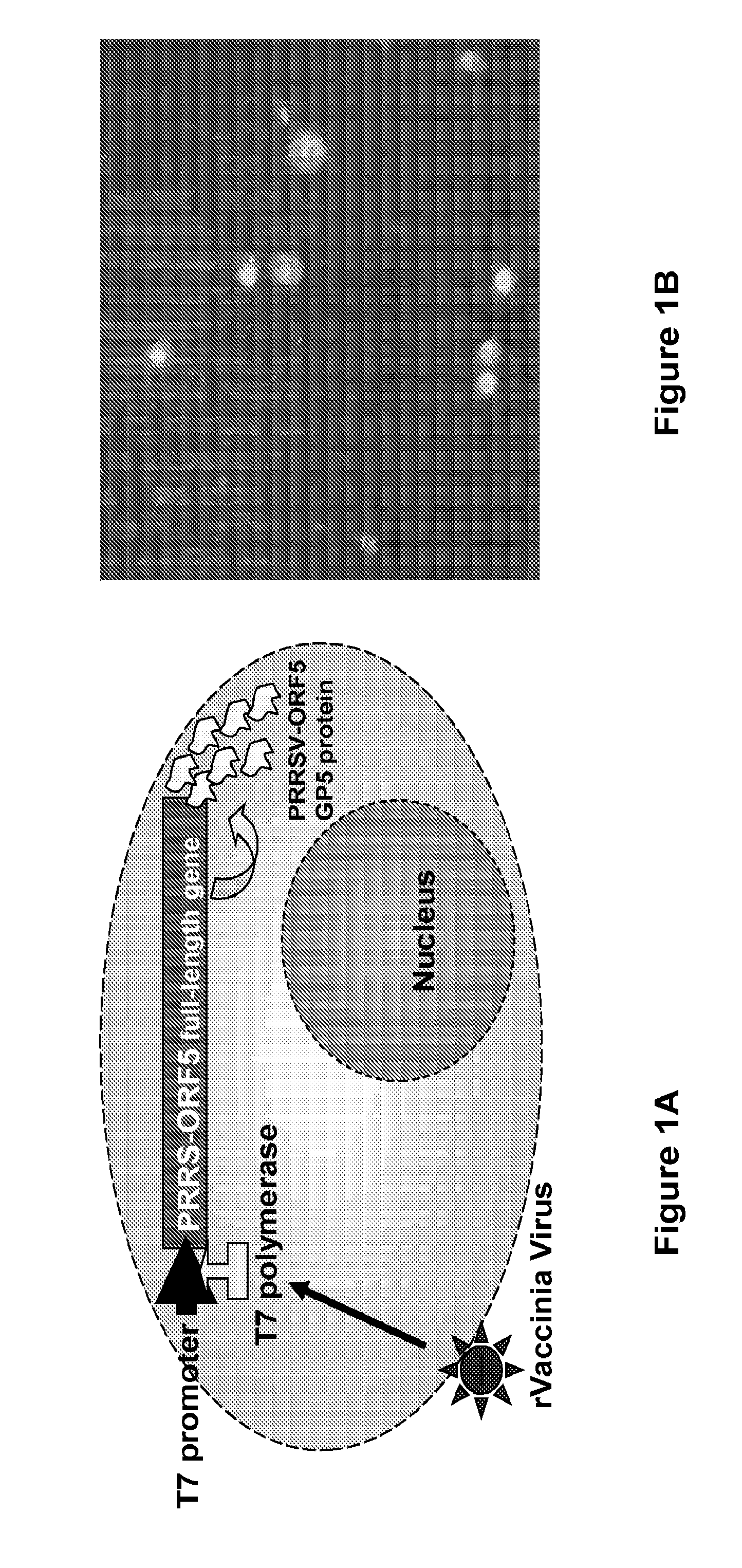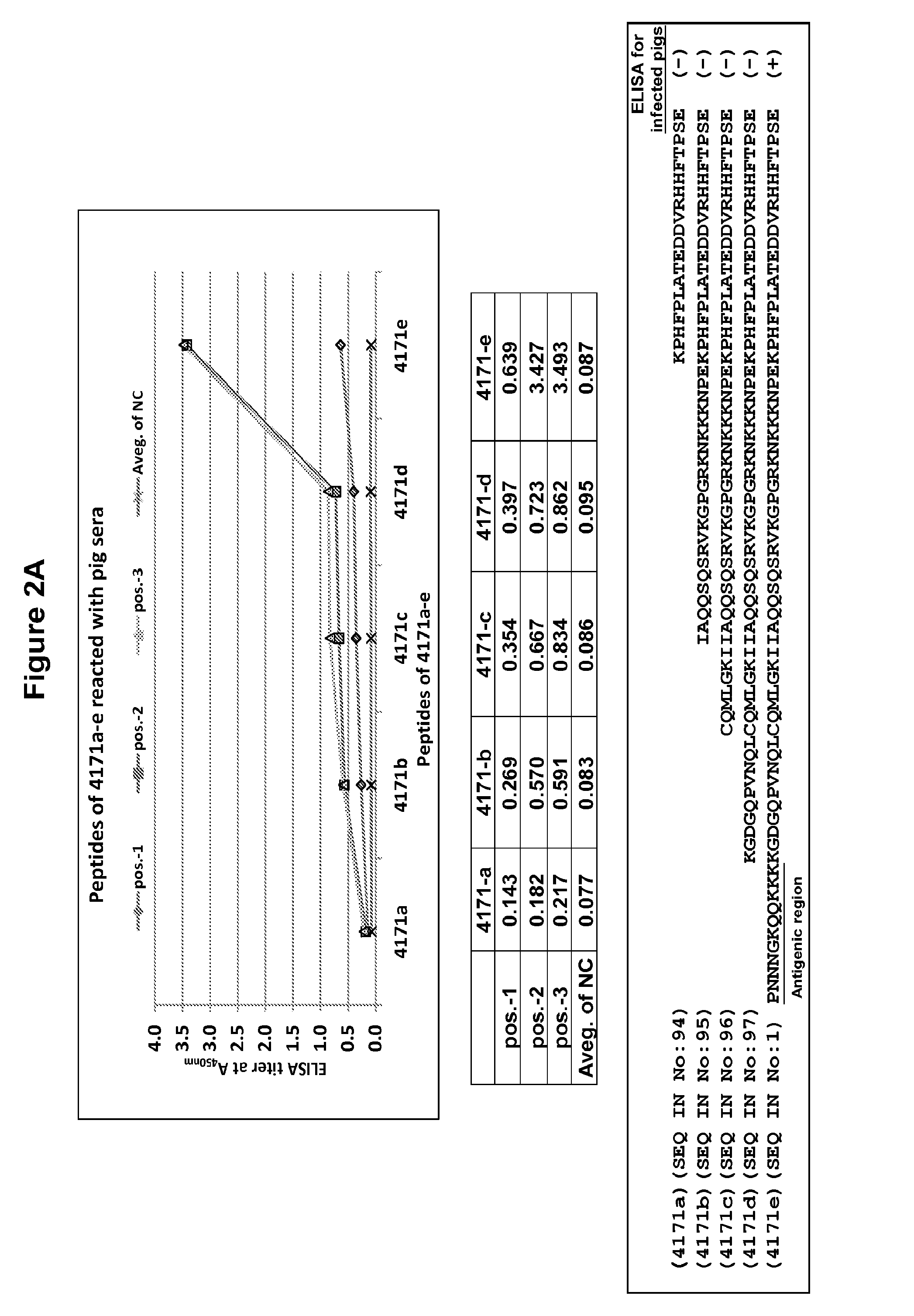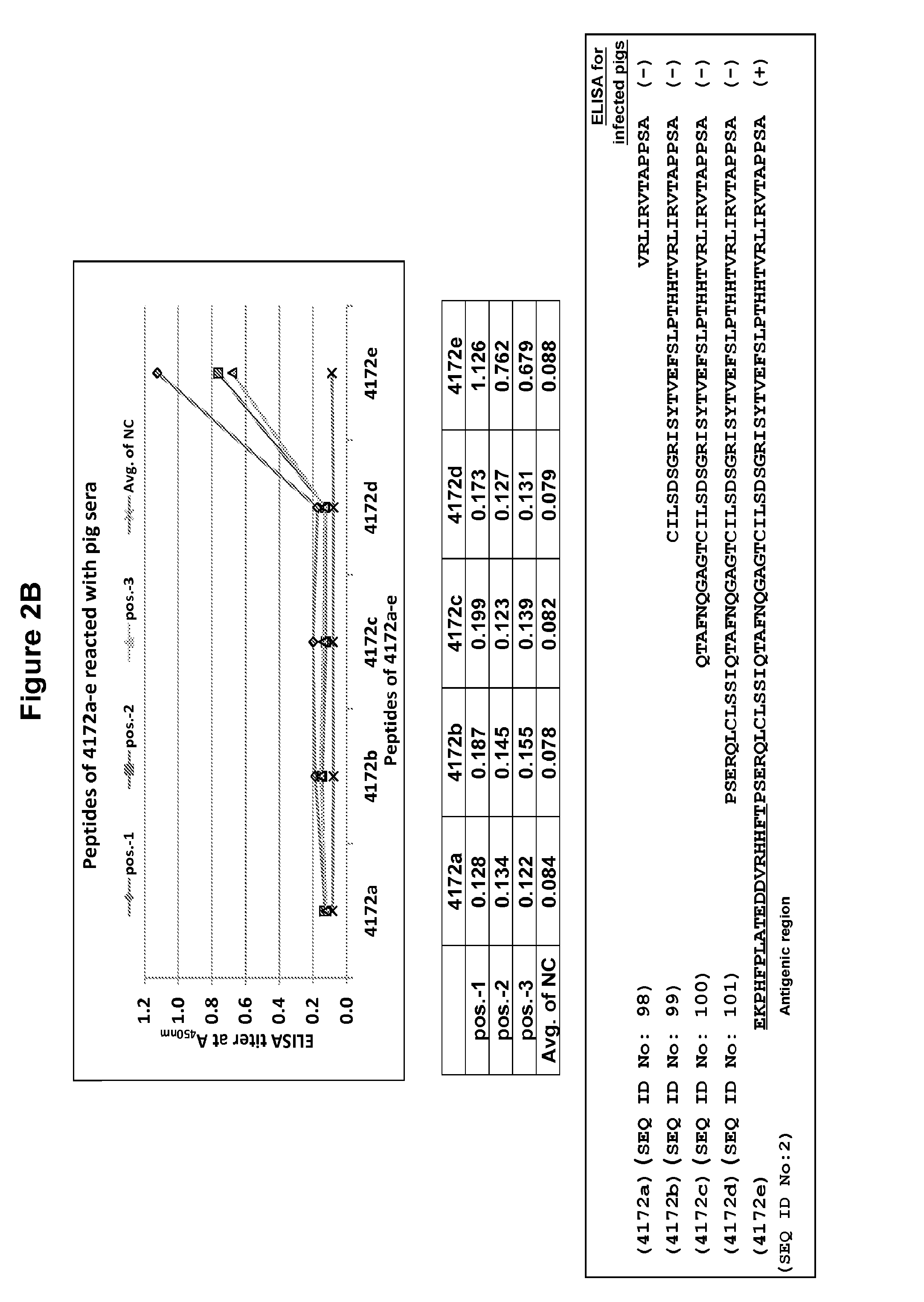Synthetic peptide-based marker vaccine and diagnostic system for effective control of porcine reproductive and respiratory syndrome (PRRS)
a technology of porcine respiratory syndrome and synthetic peptides, which is applied in the direction of immunological disorders, instruments, antibody medical ingredients, etc., can solve the problems of complex immune response, unfavorable synthetic peptide vaccine production, etc., and achieve the effect of enhancing their respective immunogenicity
- Summary
- Abstract
- Description
- Claims
- Application Information
AI Technical Summary
Benefits of technology
Problems solved by technology
Method used
Image
Examples
example 1
Serological Assays for Assessment of Immune Sera Titers for Crossreactivity Between the Target PRRSV B Cell Epitope Cluster Peptide Antigens and the Native PRRSV Protein Antigens by Immunofluorescent Assay (IFA) Using PRRSV Co-Transfected HTK Cells
[0113]Antibodies directed against PRRSV subunit proteins, GP3, GP4 and GP5, can be detected by immunofluoresence using HTK cells co-transfected recombinant vaccinia virus rVVT7 (T7 polymerase recombinant vaccinia virus) with plasmid encoding PRRSV orf3, orf4 and orf5 downstream of a T7 promoter respectively. This method provides for transient expression of these PRRSV proteins in mammalian cells with high-fidelity with its original viral replication. As PRRSV GP3, GP4 and GP5 consist of transmembrane domain and side-chain modification, the best PRRSV protein structure can only be make de novo. Each PRRSV subunit protein, GP2, GP3, GP4 or GP5, was synthesized de novo and the co-transfected HTK cells were used as the target cells for the per...
example 2
PRRSV B Cell Epitope Cluster Peptide Antigen Based ELISAs for Immunogenicity Assessment of the Designer Peptides Representing Neutralizing / Receptor Binding Sites of PRRSV
[0118]The wells of 96-well plates were coated individually for 1 hour at 37° C. with 100 μL of individual target peptides, at 2 μg / mL unless specifically mentioned, in 10 mM NaHCO3 buffer, pH 9.5 unless noted otherwise.
[0119]The peptide-coated wells were incubated with 250 μL of 3% by weight of gelatin in PBS in 37° C. for 1 hour to block non-specific protein binding sites, followed by three washes with PBS containing 0.05% by volume of TWEEN® 20 and dried. Pig serum positive for PRRSV antibody by IFA and negative control sera were diluted 1:20, unless otherwise noted, with PBS containing 20% by volume normal goat serum, 1% by weight gelatin and 0.05% by volume TWEEN® 20. One hundred microliters of the diluted specimens were added to each of the wells and allowed to react for 60 minutes at 37° C.
[0120]The wells were...
example 3
Identification of Optimal PRRSV Antigenic Peptides in Diagnostic Application to Differentiate Infected from Vaccinated Animals
[0123]The genomic sequences of PRRSV from the previously published sequence of PRRSV isolate JXA1, LV, EU, NA and from a Taiwan strain MD001 were used to deduce the protein sequences from open reading frames, and the data obtained from the ORF 2, 3, 4, 5, 6 and 7 encoded protein sequences were used to design B cell epitope cluster antigenic peptides for detection of antibodies in sera from animals with PRRSV infection, and antigenic peptides representing functional neutralizing / receptor binding sites used in marker vaccine formulations for detection of specific antibodies elicited in animals receiving marker vaccine formulations.
[0124]We have employed a strategy which uses bioinformatic information and classical immunization experiments to restrict the number of peptides to be screened for identification of optimal B and T cell epitope clustered peptides for ...
PUM
| Property | Measurement | Unit |
|---|---|---|
| pH | aaaaa | aaaaa |
| volume | aaaaa | aaaaa |
| volume | aaaaa | aaaaa |
Abstract
Description
Claims
Application Information
 Login to View More
Login to View More - R&D
- Intellectual Property
- Life Sciences
- Materials
- Tech Scout
- Unparalleled Data Quality
- Higher Quality Content
- 60% Fewer Hallucinations
Browse by: Latest US Patents, China's latest patents, Technical Efficacy Thesaurus, Application Domain, Technology Topic, Popular Technical Reports.
© 2025 PatSnap. All rights reserved.Legal|Privacy policy|Modern Slavery Act Transparency Statement|Sitemap|About US| Contact US: help@patsnap.com



